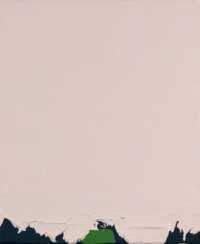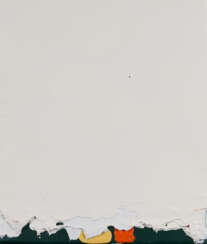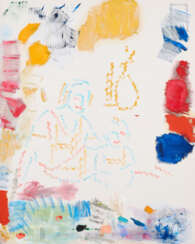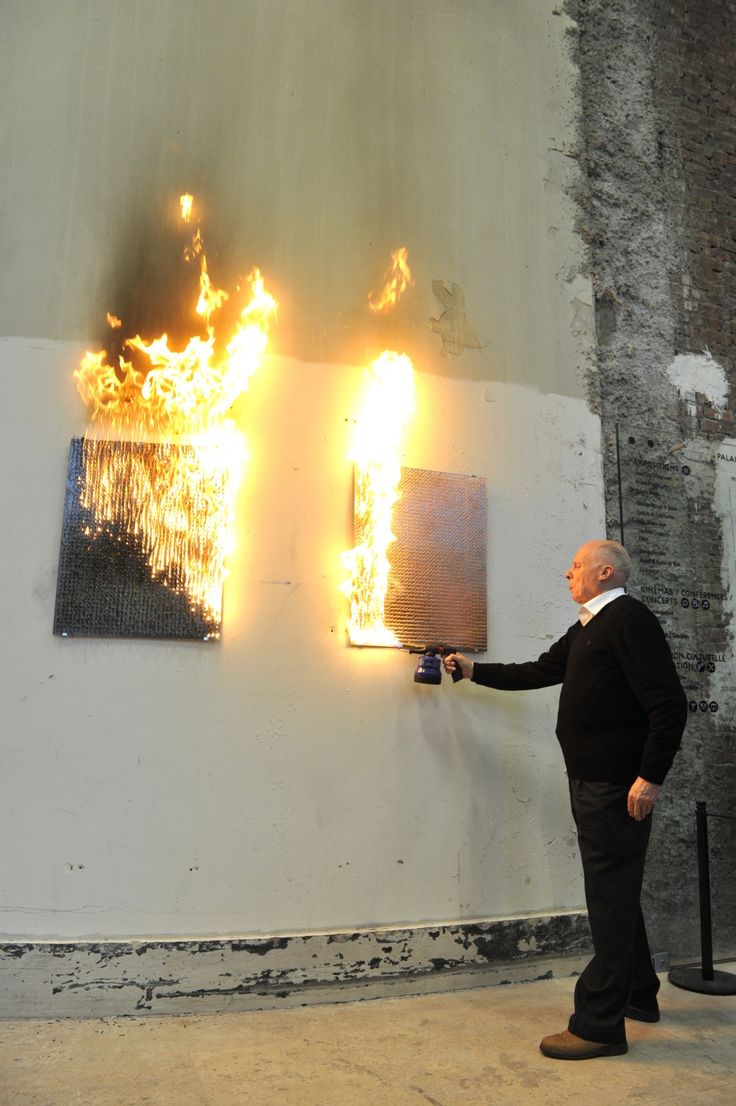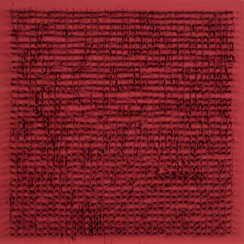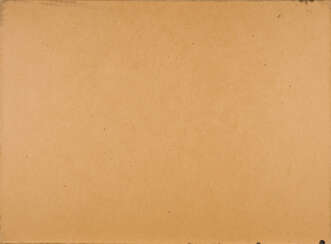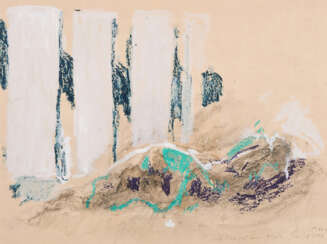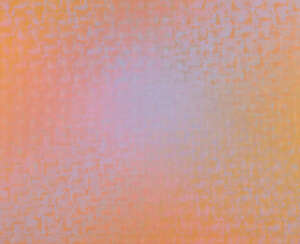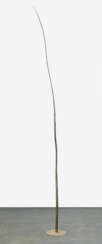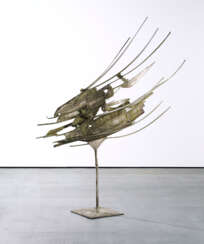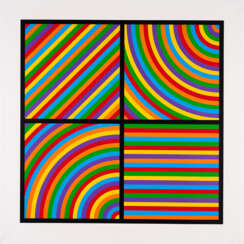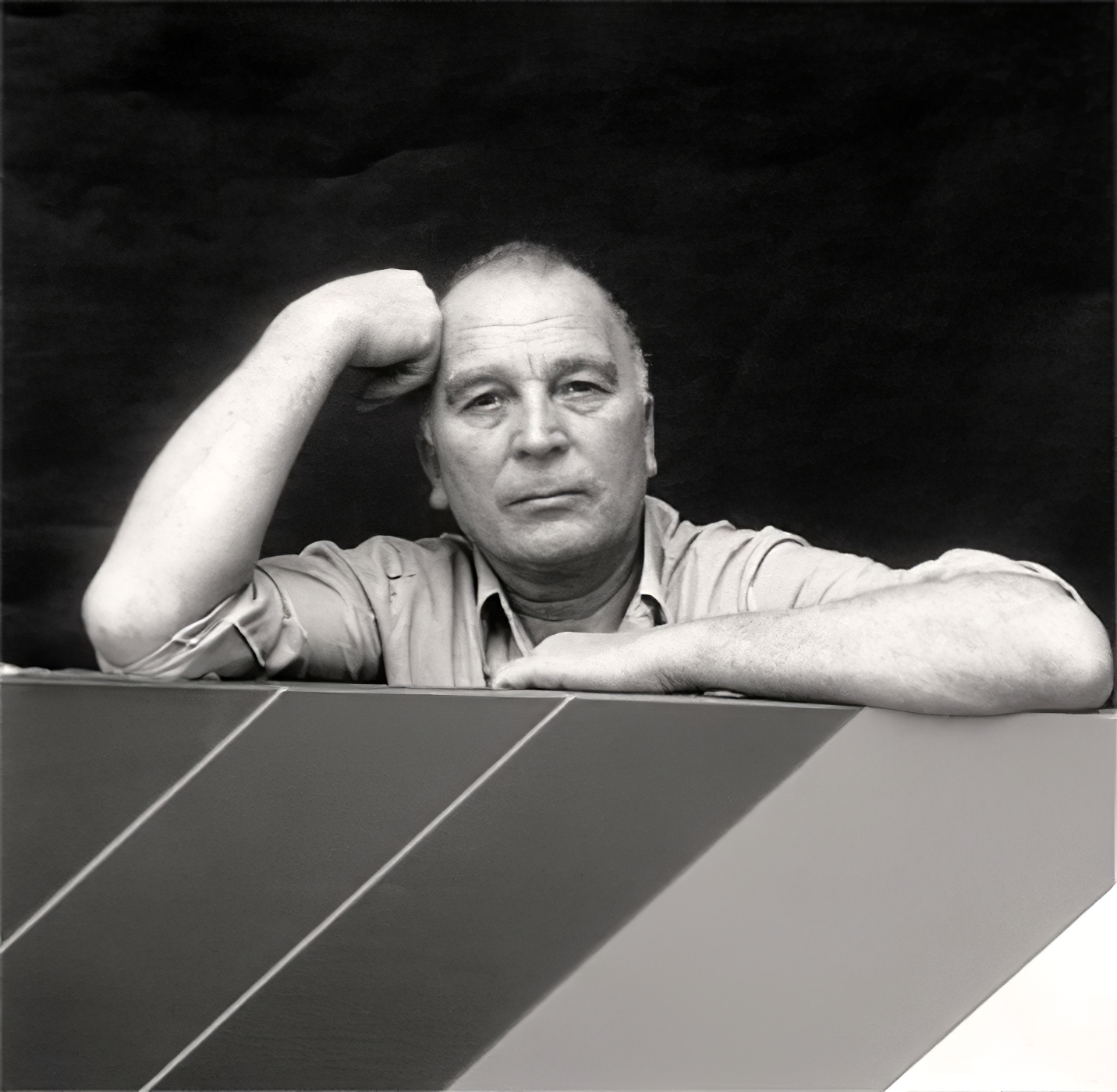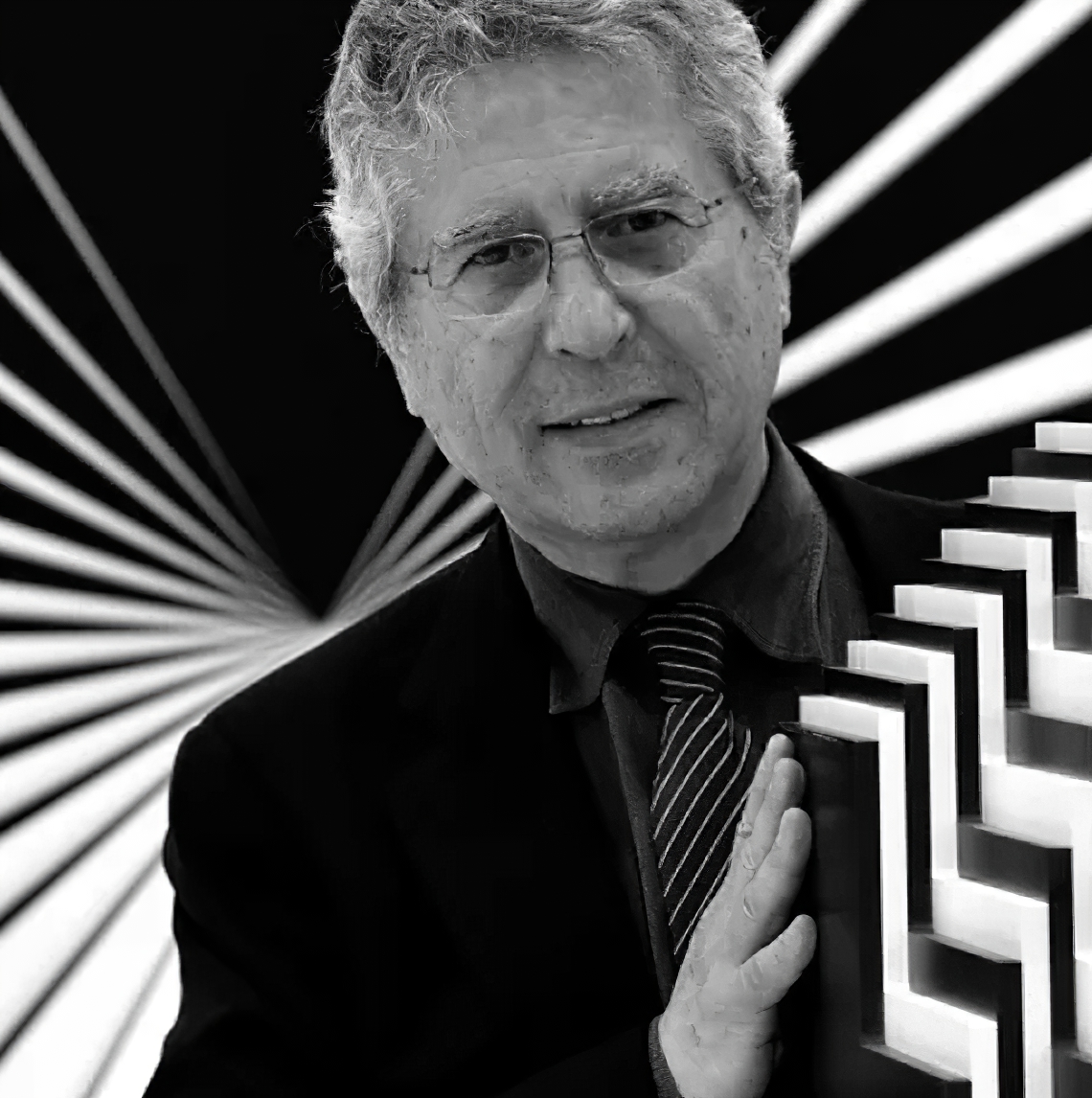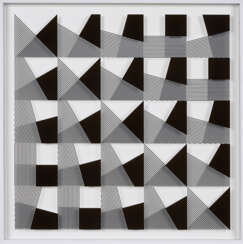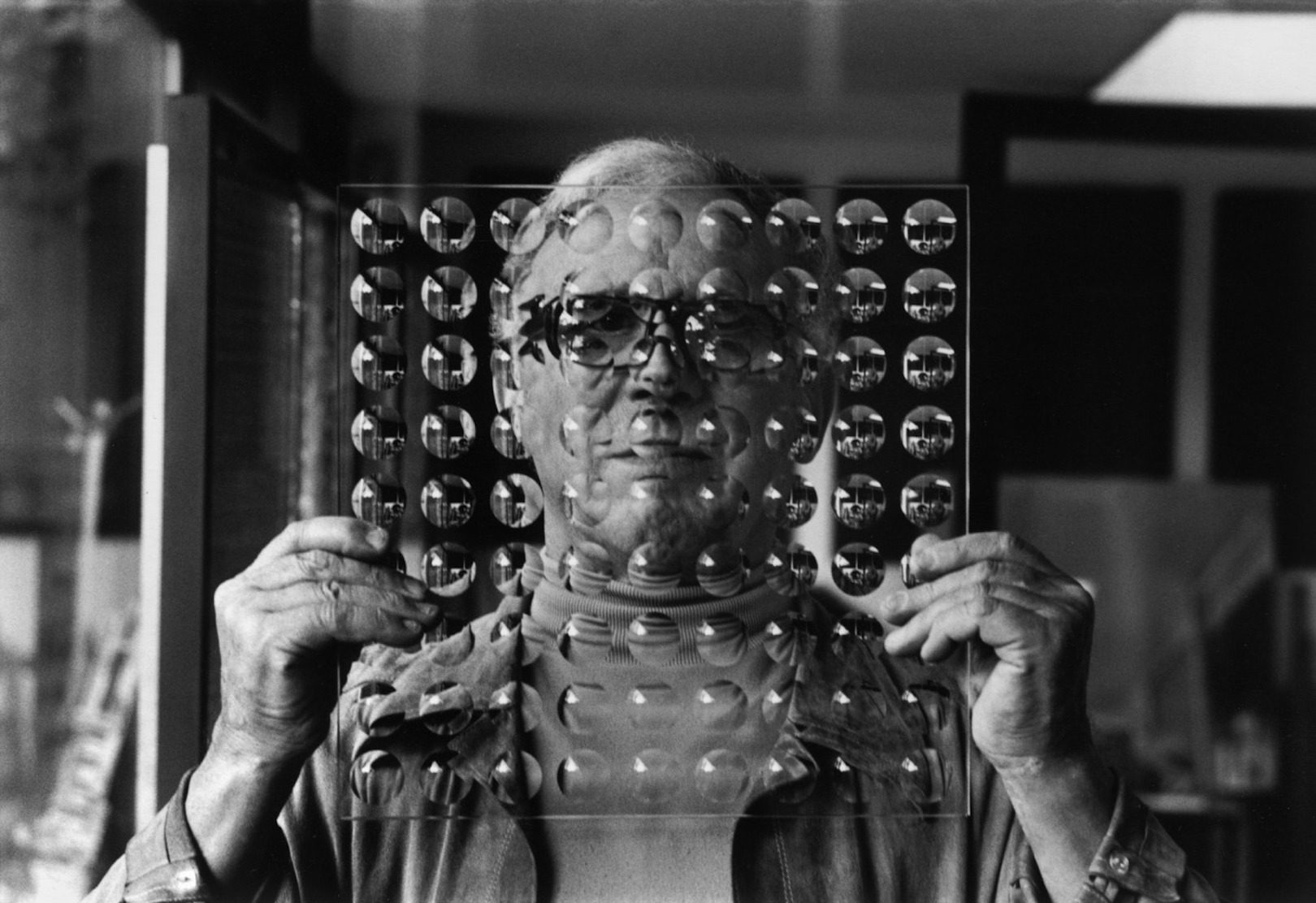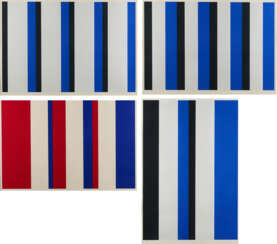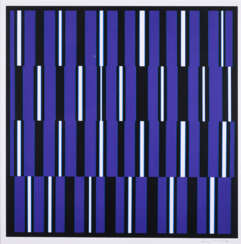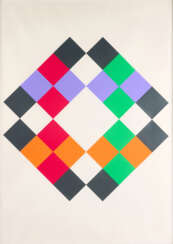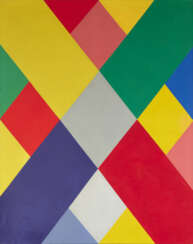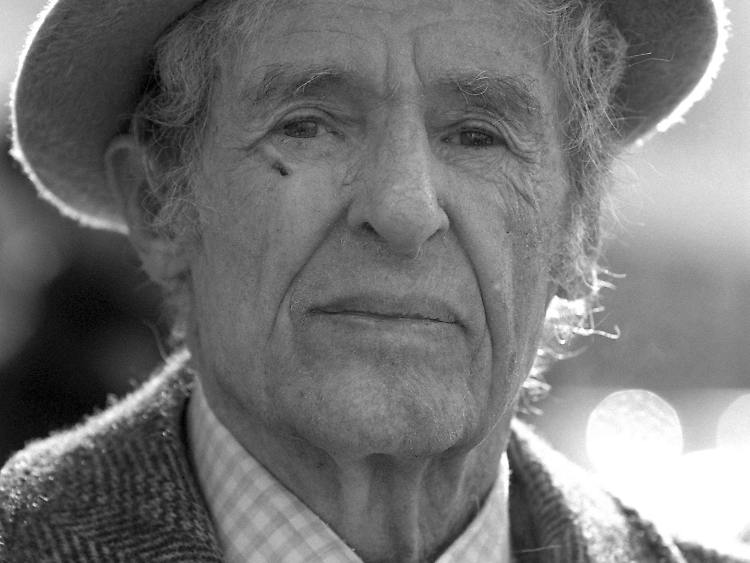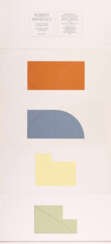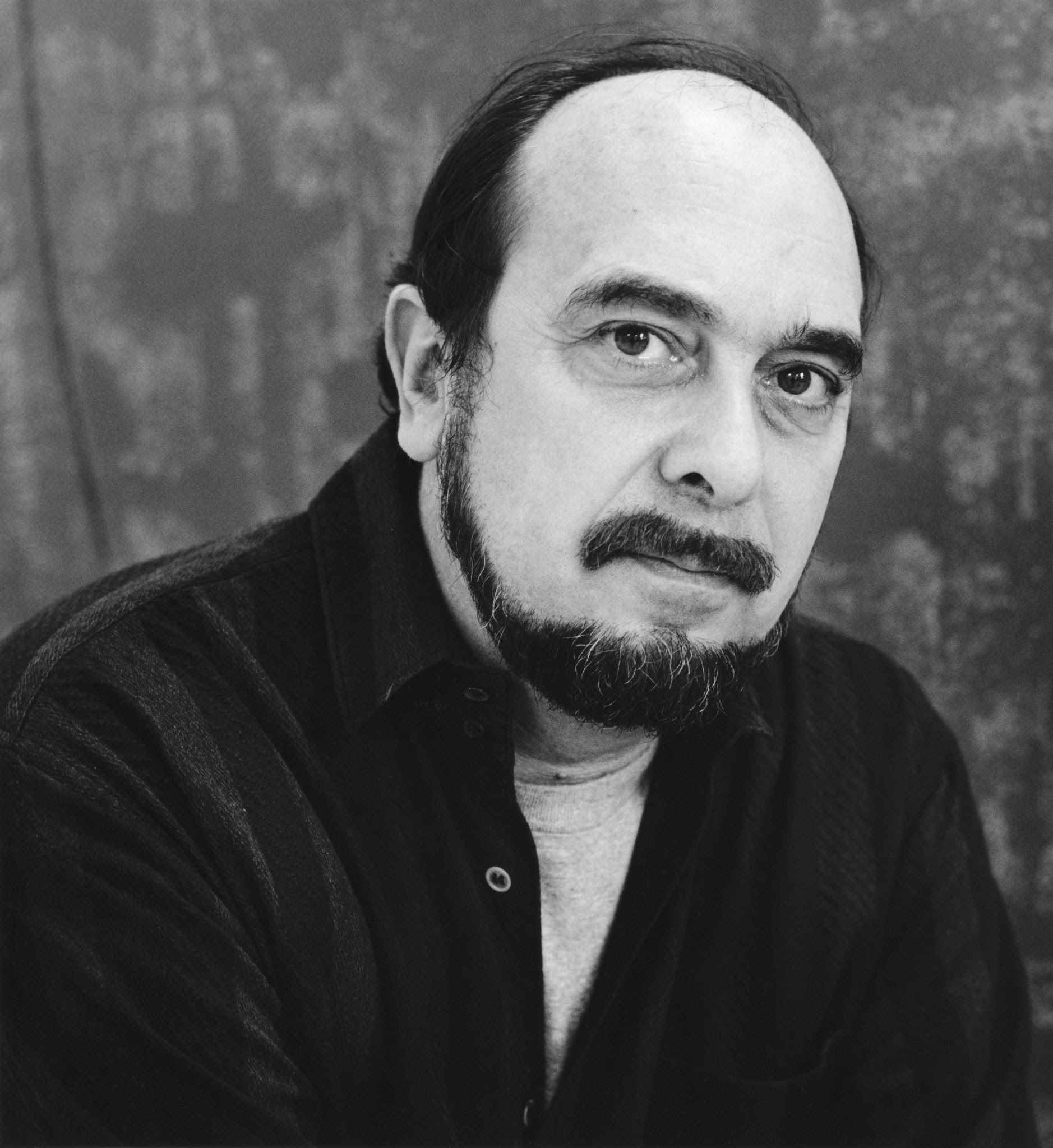
A1175: Towards Abstraction
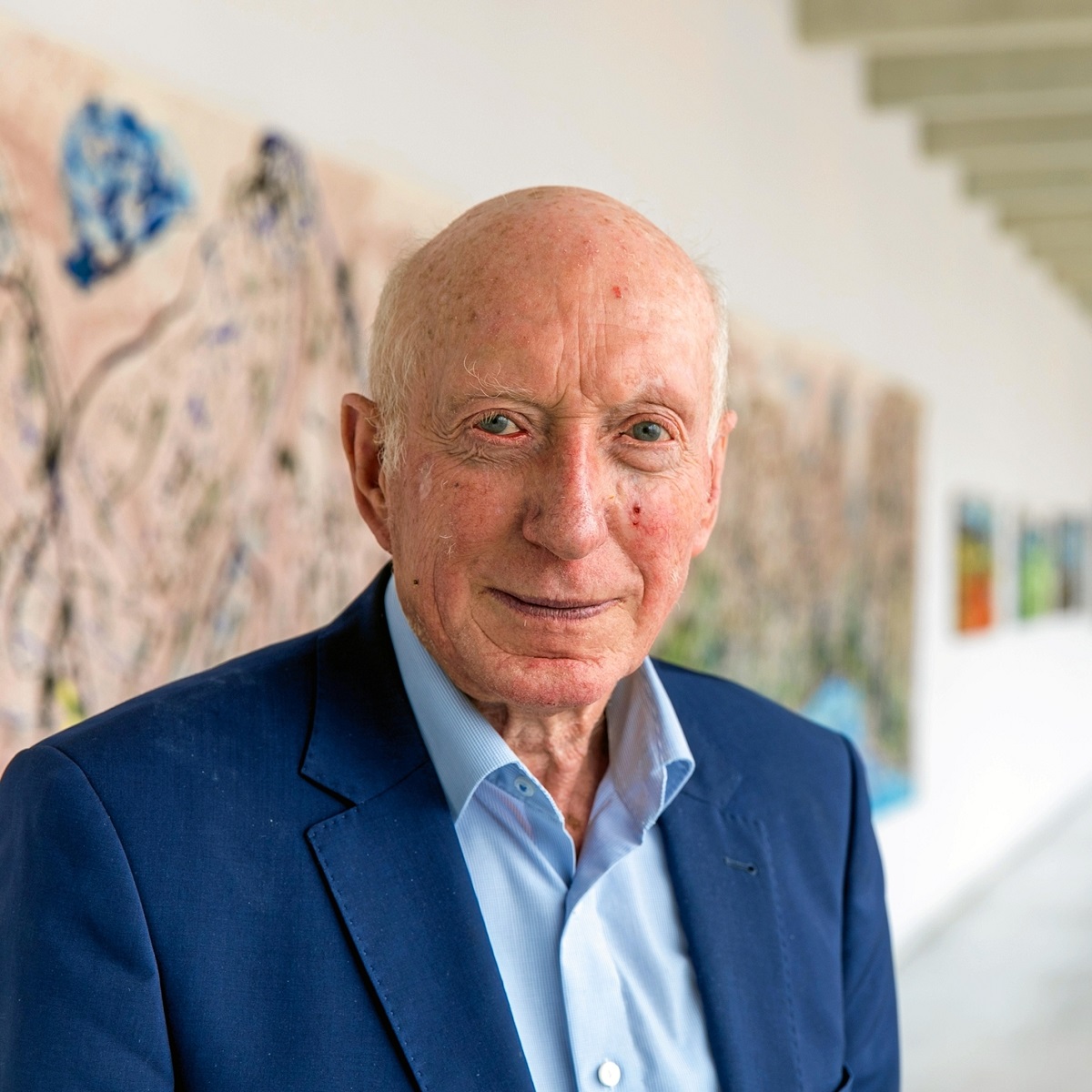
Diether Kunerth is a contemporary artist who lives in Ottobeuren, Upper Swabia.
Diether Kunerth studied from 1960 to 1967 at the Academy of Fine Arts, Munich and was master-class student of Prof. Heinrich Kirchner. Kunerth soon turned his back on the city to work in Ottobeuren. Without being subject to the constraints of big-city art business, he developed a large and extensive oeuvre. In consideration of Kunerth's artistic significance, the municipality of Ottobeuren established the Museum für zeitgenössische Kunst – Diether Kunerth (museum for contemporary art – Diether Kunerth), which cost 4.7 Mio Euro and was co-funded by the federal state of Bavaria und the EU. The museum opened on May 24, 2014. In the ceremonial address at the opening of the museum, the president of the Munich Academy of Fine Arts, Dieter Rehm, described his friend as a "genius of the place" and a "genius of the Allgäu".

Jaime Isidoro is a Portuguese artist. Studied drawing and painting at Escola Soares dos Reis, Porto. For the first time he exhibited individually in 1945 (Porto). Parallel to his career as an artist, he has engaged in a wide range of activities as a cultural animator, gallery owner and teacher associated with important visual arts moments in the city of Porto and in the country. Since the urban landscape, especially the city of Porto, was the subject of many of his works, he initially created figurative works with sensitive formal simplifications, later developing into abstraction. His career as an artist has been marked by two distinct periods that define different phases: the first occurred in the mid-1940s and mid-1950s, while the second developed from the second half of the 1980s.

Jaime Isidoro is a Portuguese artist. Studied drawing and painting at Escola Soares dos Reis, Porto. For the first time he exhibited individually in 1945 (Porto). Parallel to his career as an artist, he has engaged in a wide range of activities as a cultural animator, gallery owner and teacher associated with important visual arts moments in the city of Porto and in the country. Since the urban landscape, especially the city of Porto, was the subject of many of his works, he initially created figurative works with sensitive formal simplifications, later developing into abstraction. His career as an artist has been marked by two distinct periods that define different phases: the first occurred in the mid-1940s and mid-1950s, while the second developed from the second half of the 1980s.
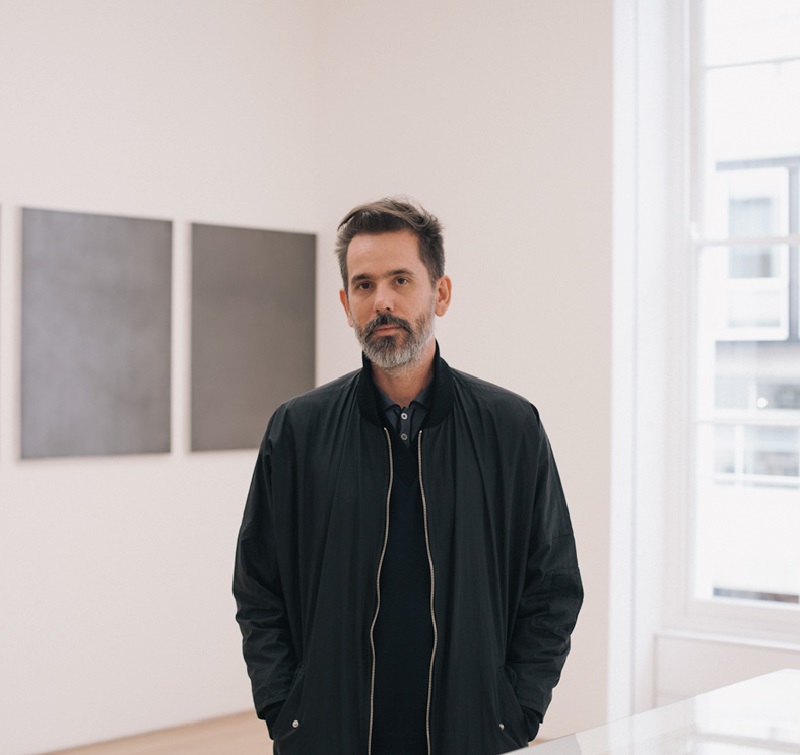
Diango Hernández is a Cuban artist who lives and works between Düsseldorf, Germany and Havana. From 1994 to 2003, Hernández was involved with Ordo Amoris Cabinet, which he co-founded with Ernesto Oroza, Juan Bernal, Francis Acea and Manuel Piña. He is married to artist Anne Pöhlmann.
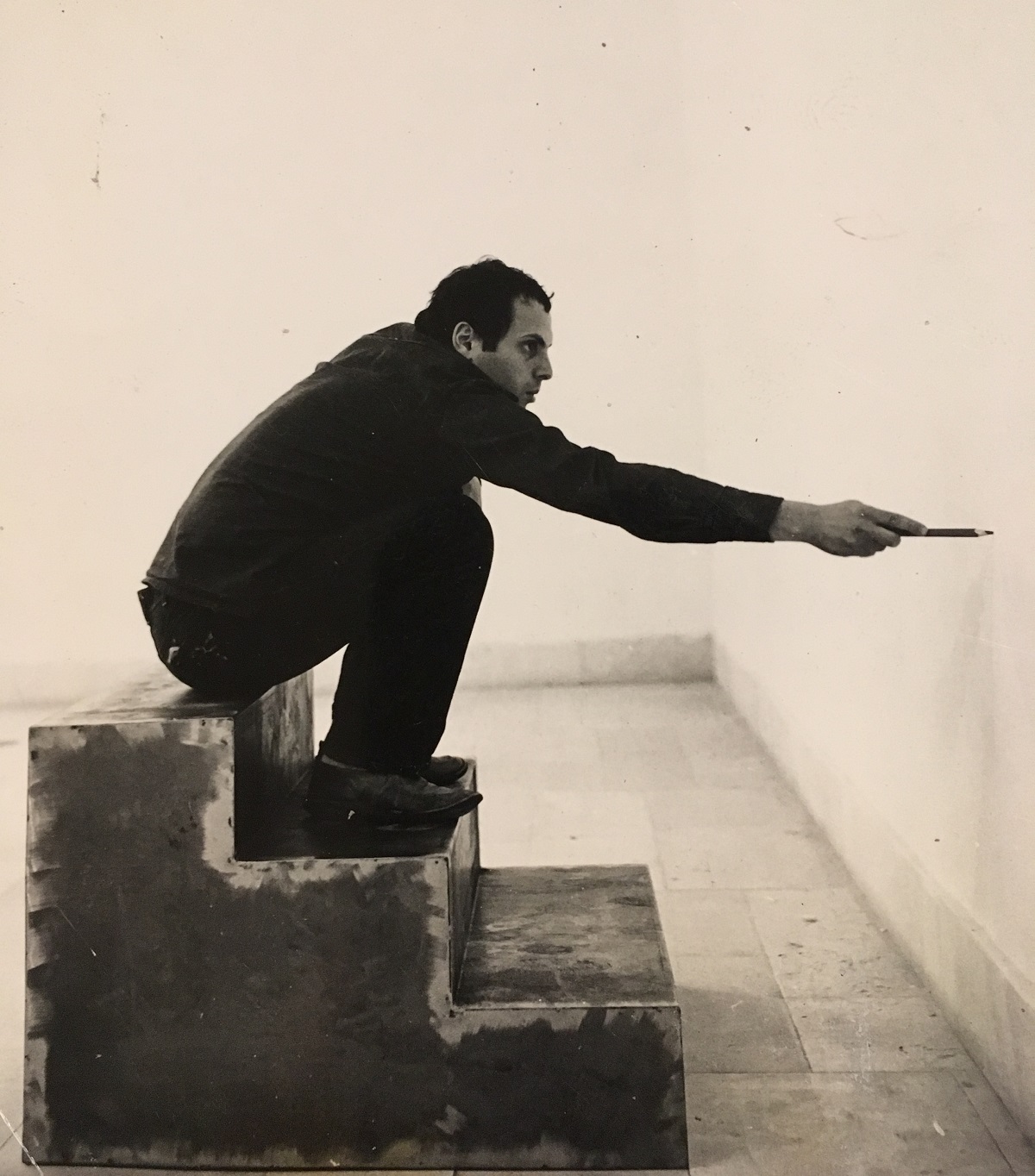
Serge Spitzer was an American artist of Romanian origin. He has worked in Jerusalem, New York and Berlin and is known for his installations, sculptures, photographs and videos.
Serge Spitzer studied at the National University of Art in Bucharest from 1969 to 1972 and then at the Bezalel Academy of Art and Design in Jerusalem from 1972 to 1974.
In his work, Spitzer has often explored the relationship between art and its context.

Günter Evertz is a German visual artist.
Günter Evertz has studied art history and nudes at the School of Art in Berlin since 1978. He was a master student under Prof. Georg Baselitz.
From 1993 to 1997 was visiting professor of painting at the Humboldt University.
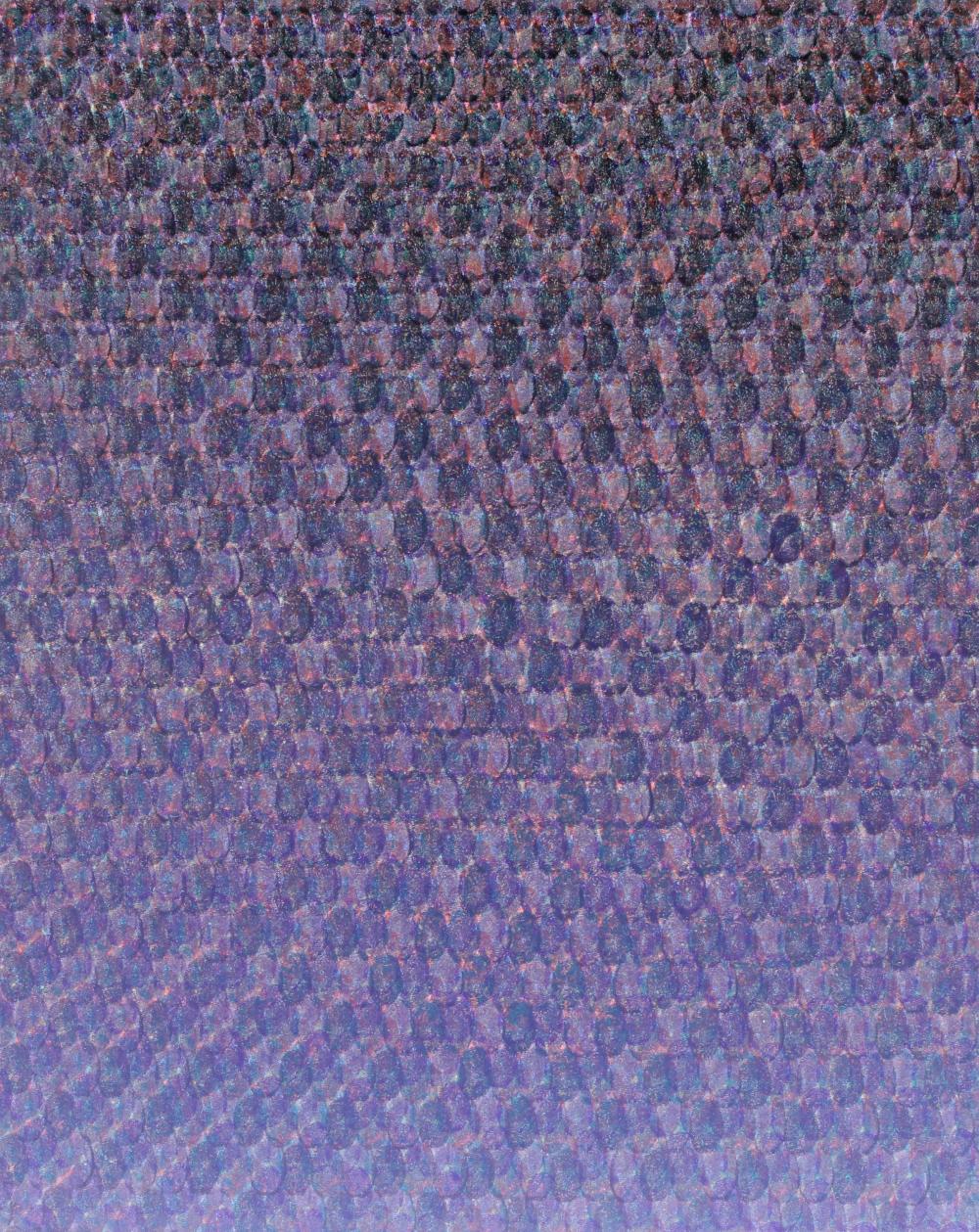
Peter Reichenberger is a German artist. In 2006, all of the artist's possessions were donated to his foundation.
Peter Reichenberger studied free painting at the Cologne School of Painting from 1967 to 1973.
Since 1986 he has worked as a free artist. He created his first paintings with a two-colour overlay of fingerprints. His work is a combination of colour, form, rigid structures and patterns.
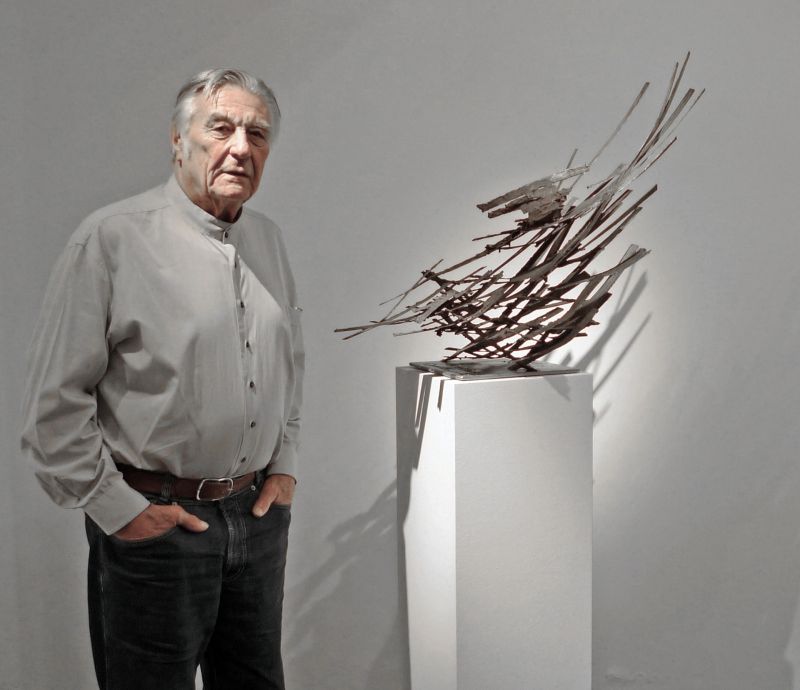
Friedrich Werthmann was a German artist and sculptor, one of the pioneers of Düsseldorf's legendary reputation as the creative centre of post-war Germany and a member of Gruppe 53, from which the ZERO artists' association later emerged.
Friedrich Werthmann's steel sculptures associated with Tachisme and Informel can be found in famous museums and private collections, as well as in prominent public places in many European cities.

Friedrich Werthmann was a German artist and sculptor, one of the pioneers of Düsseldorf's legendary reputation as the creative centre of post-war Germany and a member of Gruppe 53, from which the ZERO artists' association later emerged.
Friedrich Werthmann's steel sculptures associated with Tachisme and Informel can be found in famous museums and private collections, as well as in prominent public places in many European cities.
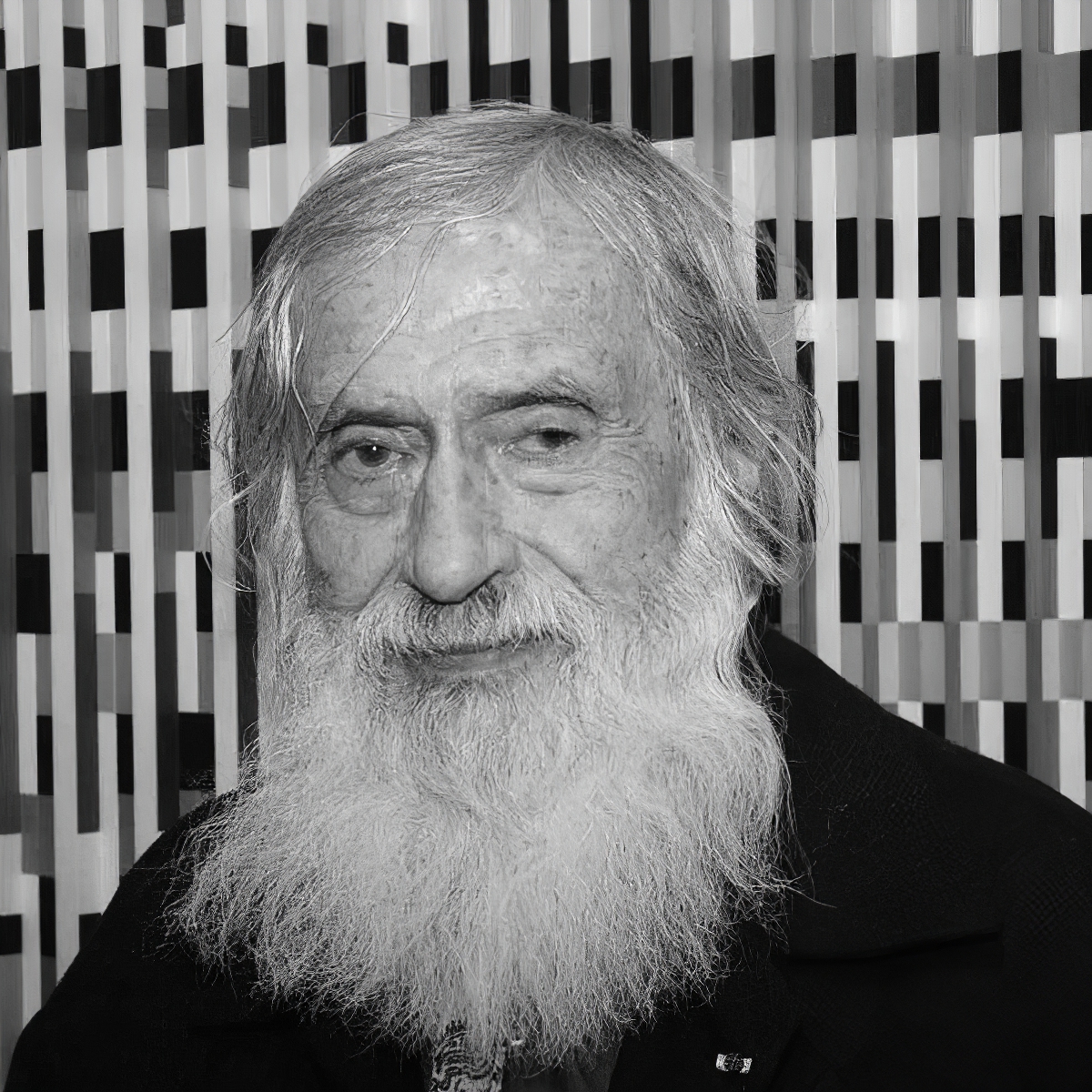
Yaacov Agam, an Israeli kinetic and optical artist born on May 11, 1928, is celebrated for revolutionizing the visual arts with his dynamic and interactive creations. Agam's pioneering work extends beyond traditional static art forms, inviting viewers into a transformative experience that changes with perspective and movement. His art, deeply rooted in his Jewish heritage and mysticism, eschews representational imagery for abstract, geometric forms and vibrant colors, engaging the observer's perception to complete the visual experience.
Notably, Agam's contributions to kinetic art have not only garnered him international acclaim but also led to his works commanding the highest prices among Israeli artists at auction. His innovative "Agamographs" use lenticular printing to create illusions of depth and motion, highlighting his fascination with the interplay between art, viewer, and the temporal dimension. Agam's significant exhibitions include retrospectives at the Musée National d'Art Moderne in Paris and the Guggenheim Museum in New York. His achievements are further recognized through multiple awards and the establishment of the Yaacov Agam Museum of Art in his hometown of Rishon LeZion, Israel, dedicated to his vision of art in motion.
For collectors and art and antiques experts, Agam's work represents a profound exploration of perception, time, and spirituality, offering a unique and engaging experience. His art invites us to see beyond the visible, reminding us of the ever-changing nature of reality and our active role in its perception. To stay updated on new product sales and auction events related to Yaacov Agam, sign up for updates and immerse yourself in the dynamic world of one of the most influential modern artists.
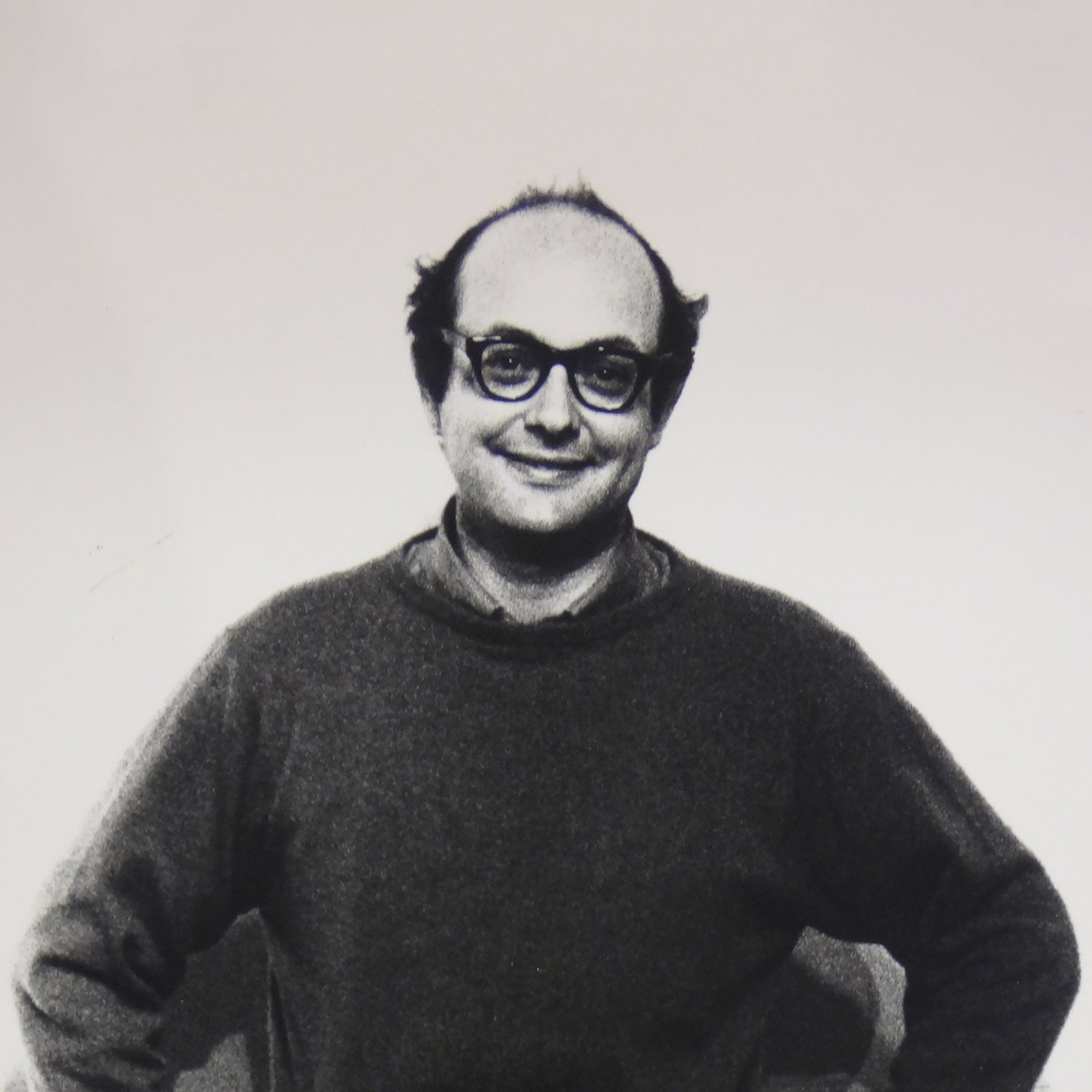
Sol LeWitt was an American artist linked to various movements, including conceptual art and minimalism.
LeWitt came to fame in the late 1960s with his wall drawings and «structures» (a term he preferred instead of «sculptures») but was prolific in a wide range of media including drawing, printmaking, photography, painting, installation, and artist's books.

Andreas Brandt is a contemporary German artist. He developed his own rigorous and daring vision of freedom early on, which is embodied in his parsimonious mathematical compositions.
Andreas Brandt is most closely associated with Swiss artists of concrete art, in particular Max Bill and Camilla Greser.
In his work, Brandt aimed to present colour "as an autonomous form" and show the "tension it creates with other autonomous forms in a rectangular area".
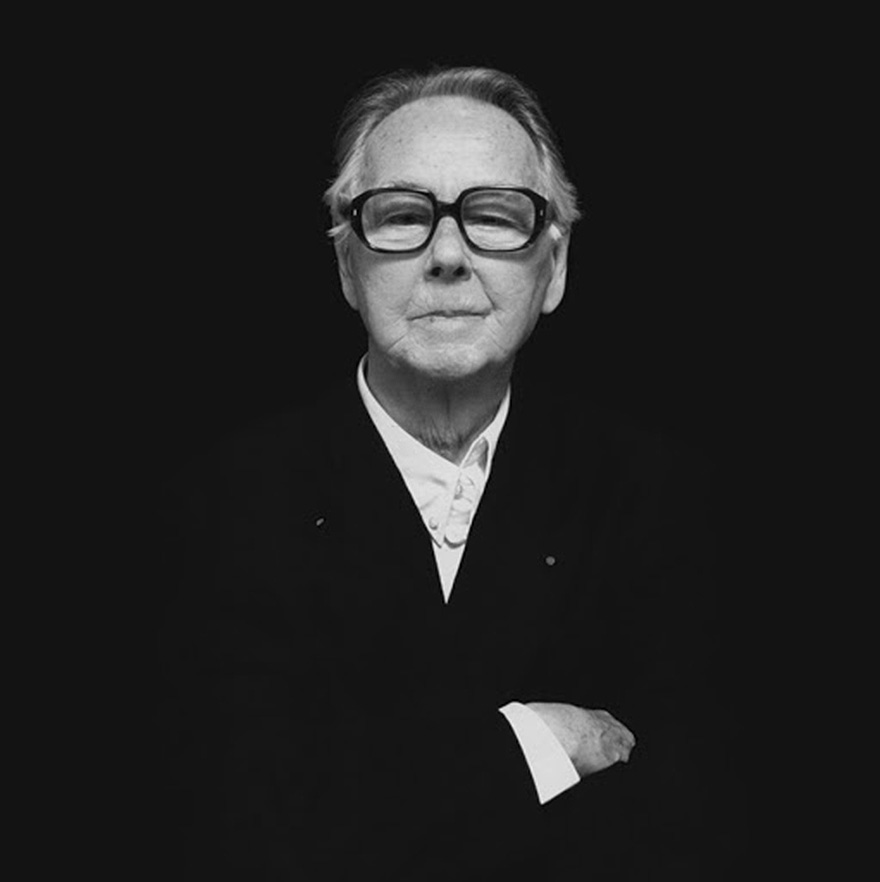
Victor Vasarely, a seminal figure in the Op art movement, was a Hungarian-French artist celebrated for his pioneering contributions to geometric abstract art. Born Győző Vásárhelyi in Pécs, Hungary, in 1906, Vasarely's artistic journey led him to Paris, where he honed a distinctive style marked by optical illusions and kinetic art. By the late 1940s, he had developed his iconic approach, utilizing geometric shapes and a limited color palette to create artworks that seemed to move and vibrate. His work "Zebra," created in 1937, is often cited as one of the earliest examples of Op art, showcasing his fascination with creating the illusion of depth and movement on a flat surface.
Throughout the 1950s and 1960s, Vasarely's exploration into optical effects deepened, leading to significant series like his "Vega" works. These pieces are characterized by their illusionary three-dimensional space, seemingly pushing and pulling the viewer into the canvas. His dedication to optical and geometric abstraction was not just a pursuit of aesthetic innovation but also an exploration of the viewer's perception, making the observer an integral part of the artwork.
Vasarely's influence extended beyond the canvas, impacting architecture, sculpture, and even space exploration. In 1970, he founded the first museum dedicated to his works in Gordes, followed by the establishment of the Fondation Vasarely in Aix-en-Provence in 1976, showcasing his vision of integrating art with the environment. His artworks have found homes in prestigious institutions like the Museum of Modern Art and have been celebrated in exhibitions worldwide.
For collectors and experts in art and antiques, Vasarely's works offer a mesmerizing blend of scientific precision and artistic expression, encapsulating a moment in art history where the boundaries between viewer and artwork blurred. His legacy is a testament to the power of visual perception and the endless possibilities of abstract art.
For those interested in delving deeper into Victor Vasarely's visionary world and perhaps acquiring a piece of this history, signing up for updates on new product sales and auction events related to Vasarely's works is highly recommended. Stay informed and embrace the opportunity to own a part of the optical and geometric abstraction movement that Vasarely so brilliantly pioneered.

Max Bill, a Swiss artist, architect, painter, typeface designer, industrial designer, and graphic designer, emerged as a key figure in 20th-century art and design. Born in Winterthur, Switzerland, in 1908, Bill's education at the Bauhaus under luminaries like Wassily Kandinsky, Paul Klee, and Oskar Schlemmer profoundly influenced his multidisciplinary approach. His work spans from graphic design, where he was instrumental in shaping Swiss design from the 1950s, to product design with iconic creations like the Ulmer Hocker, a versatile stool designed in 1954.
Bill's contributions to concrete art and his role in founding the Ulm School of Design alongside Inge Aicher-Scholl and Otl Aicher in 1953, mark him as a pioneer who blurred the lines between art, design, and architecture. His theoretical writings and teaching at the Ulm School further underscored his commitment to integrating art with science, shaping a generation of designers and artists.
Noteworthy among his architectural works are his own house and studio built in Zurich-Höngg in the early 1930s and a series of public sculptures that challenge perceptions and engage public spaces in innovative ways. His legacy also includes influential roles in politics, contributions to the field of education, and the establishment of foundations to preserve his work and ideals.
Bill's extensive oeuvre, which also includes timepieces designed for Junghans and a multitude of sculptures, demonstrates his belief in the unity of form and function and the possibility of art to embody the principles of the new physics of the 20th century. His works are not only held in high regard for their aesthetic and functional qualities but also for their ability to convey complex theoretical ideas in tangible forms.
For collectors and experts in art and antiques, Max Bill remains a figure of immense importance, whose works continue to inspire and influence contemporary design and art practices. Sign up for updates related to Max Bill to stay informed about new product sales and auction events showcasing his remarkable contributions to modern art and design.
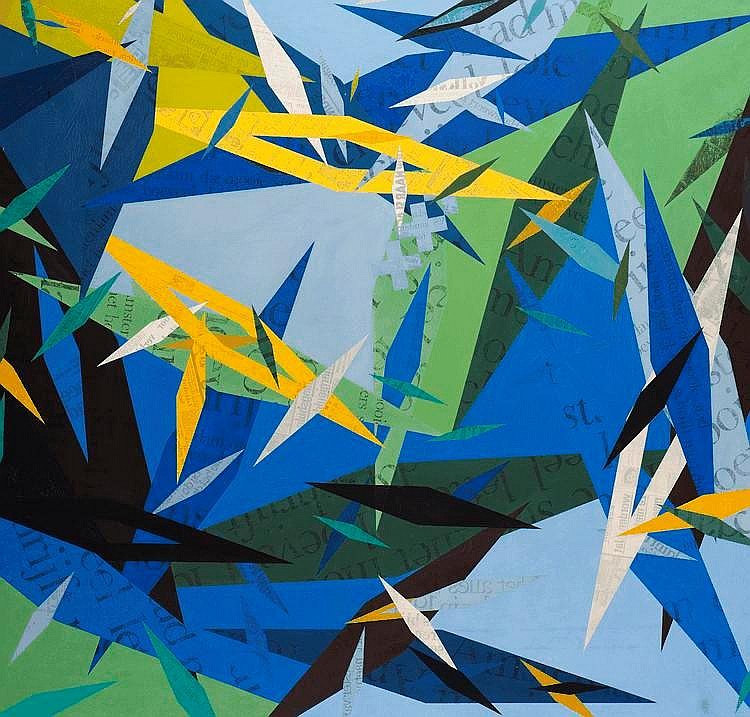
Dieter Haack is a German abstractionist painter.
Dieter Haack studied painting at the Düsseldorf Academy of Fine Arts. His works are characterised by bold colours and energetic compositions.
In addition to his art practice, Haack also worked as a professor of painting and drawing at his alma mater.
.jpg)
Josef Albers was a German-born artist and educator. The first living artist to be given a solo shows at MoMA and at the Metropolitan Museum of Art in New York, he taught at the Bauhaus and Black Mountain College, headed Yale University's department of design, and is considered one of the most influential teachers of the visual arts in the twentieth century.
As an artist, Albers worked in several disciplines, including photography, typography, murals and printmaking. He is best known for his work as an abstract painter and a theorist. His book Interaction of Color was published in 1963.
.jpg)
Josef Albers was a German-born artist and educator. The first living artist to be given a solo shows at MoMA and at the Metropolitan Museum of Art in New York, he taught at the Bauhaus and Black Mountain College, headed Yale University's department of design, and is considered one of the most influential teachers of the visual arts in the twentieth century.
As an artist, Albers worked in several disciplines, including photography, typography, murals and printmaking. He is best known for his work as an abstract painter and a theorist. His book Interaction of Color was published in 1963.
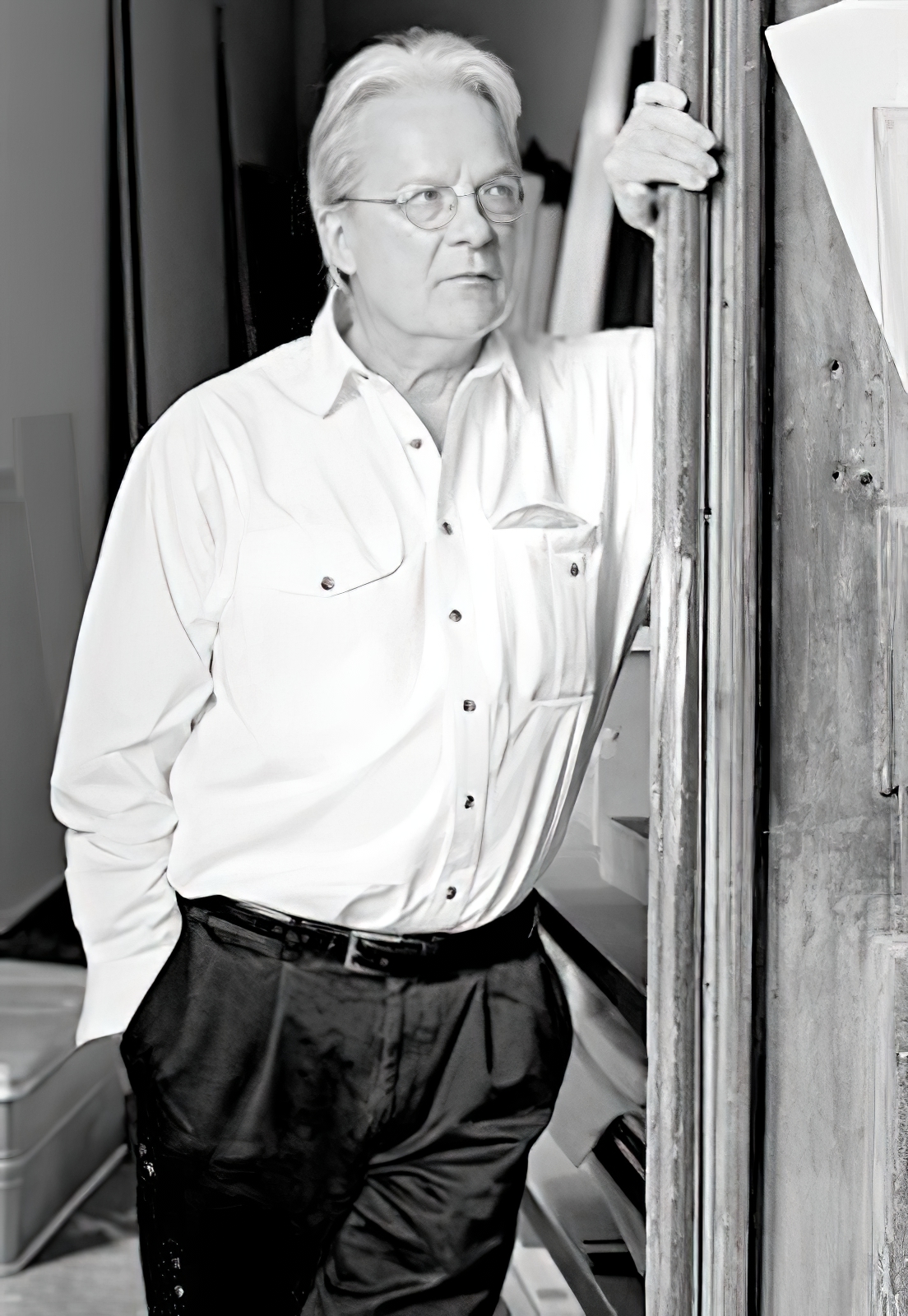
Imi Knoebel (born Klaus Wolf Knoebel) is a German artist. Knoebel is known for his minimalist, abstract painting and sculpture. The "Messerschnitt" or "knife cuts," are a recurring technique he employs, along with his regular use of the primary colors, red, yellow and blue. Knoebel lives and works in Düsseldorf.


